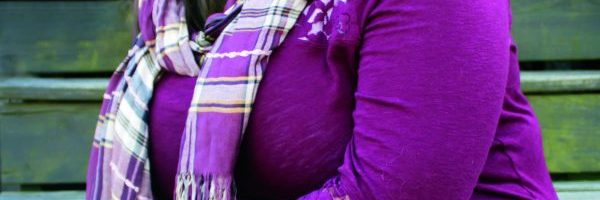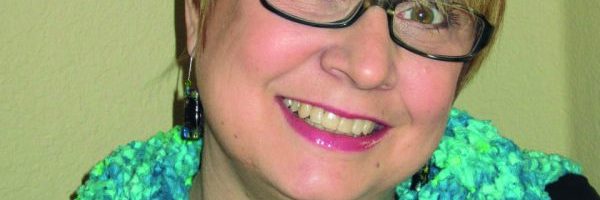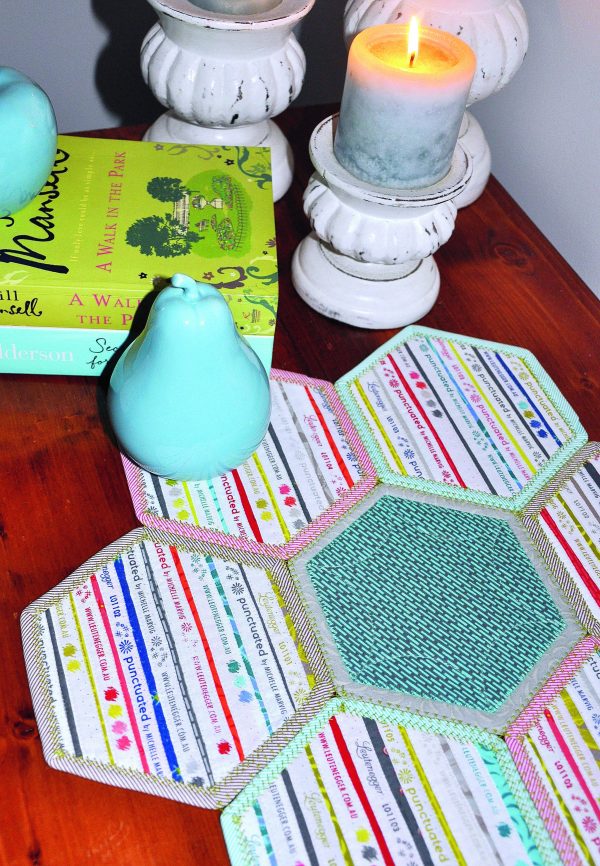
Craf-Tex and In-R-Form by Bosal Foam and Fiber
Driven by Michelle Marvig
I love how my quilts add colour and texture to my home. I once removed all the hanging quilts from the walls as I needed to showcase them at a trunk show. My husband’s first comment to me when I arrived home was that our house seemed cold and bland without the quilts on the walls. I have even extended the patchwork into the cooking area with some placemats I made for the kitchen. I really enjoyed road testing Bosal’s Foam and Fibre foam products In-R-Form and Craf-tex. It has inspired all sorts of new home decorator items.
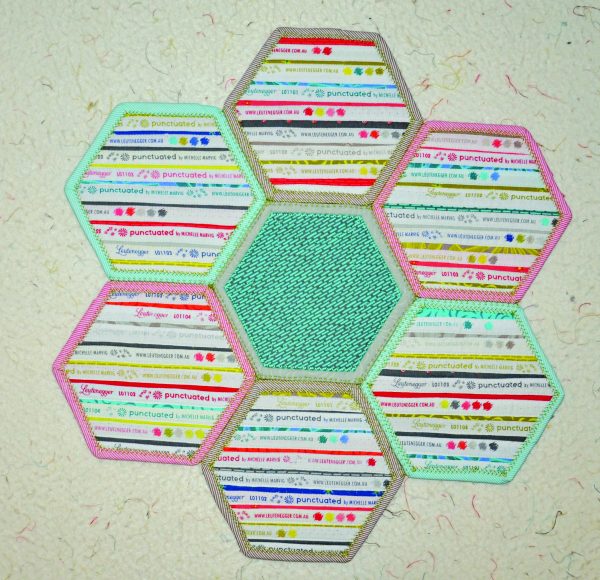
Bosal Foam and Fibre was founded in America in 1954. The company still manufactures there and has more than 50 different nonwovens, wovens, fusibles, embroidery stabilisers, hair canvases, wefts, tricots and water-solubles in the range. They make a lot of the “stuff” that we find inside our projects. For this issue I have only played with two of the range.
Learn how to make a fabric collage, thread sketch and free-motion machine quilt!
The first, Craf-tex, is a polyester fibre that looks like a stiff felt. It is machine-washable and dryable. To make it easier to use, it is a double-sided fusible product. It comes in a wide variety of shapes for a variety of crafts. It comes on a roll to allow you your own individual options, but the precut shapes are faster to use. You can get place mats in a variety of shapes, coasters, mug rug shapes, door hangers and even table runners. I loved playing with the precut hexagons. You are only limited by your imagination.
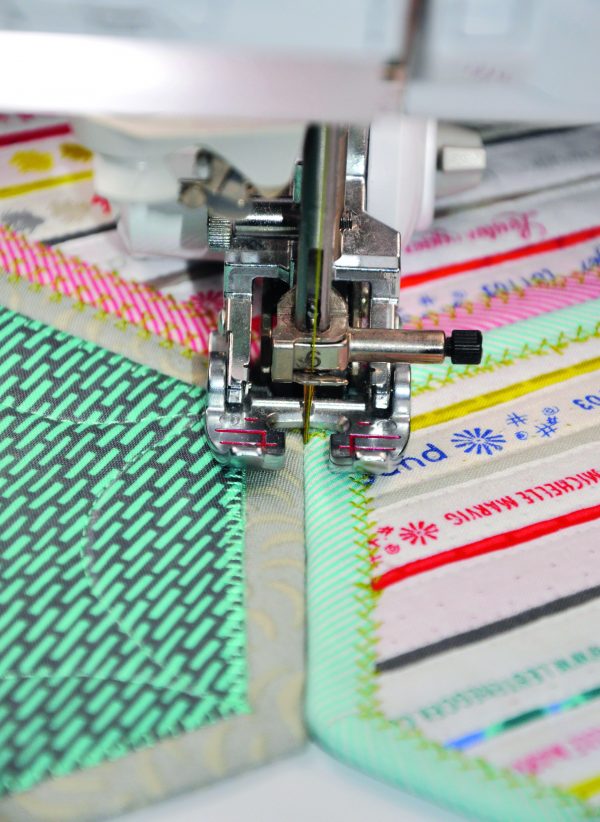
I decided to make a centrepiece for my coffee table using selvedges. I first fused the backing fabric in place by putting a larger piece of fabric wrong side up on the ironing board, then placing the Craf-tex hexagon down, finally sliding an appliqué mat on top before I ironed. I then flipped the whole lot and pressed for a second time. Next, I trimmed down the extra fabric to the size of the precut hexagon (trust me, it is easier than trying to do it after you have sewn both sides with extra length!). The selvedges were all roughly cut about ¾-1in wide. These were laid across the hexagon, starting at the bottom edge, overlapping a little at the top of each strip. This allowed both the text and the fabric pattern to be seen.
I did not need to pin as the fusible was strong enough to hold the strips, even though they overlapped. I simply pressed them in place. Straight stitching holds the edges of all strips in place. The edge is raw at this stage and needs to be bound. You could make your own narrow binding — I used 1in finished bias binding, but refolded it in thirds to make a narrower strip. The wider binding was too bulky in the corners.
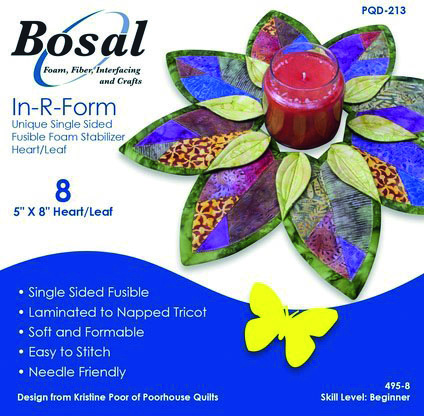
This piece-as-you-go method would work for other designs. You could cover a whole placemat sewing and flipping with a variety of strips. Or, using this technique, you could cover your Craf-tex precut shape with log cabin blocks, pineapple blocks, Flying Geese and even crazy patchwork. Another alternative could be to piece a block, then fuse the entire block to the front of the precut shape. Definitely lots of possibilities.
Learn how to make a puzzle quilt!
Another way to cover the shapes is to choose fabric for the back and the front edge. Cut both fabrics bigger than the shape. Fuse one in place, then place the two fabrics right sides together and sew around the edge of the shape. Make a cut across the centre of the loose piece of fabric, 1in in from the edge on either side, and turn through. You can now appliqué a smaller, contrast shape over the centre, covering the cut. The Craf-tex is very easy to stitch through and you can use any fancy stitch that your heart desires to finish the raw edge. However, on some of the smaller projects, a wide satin stitch would be easier than any binding or bagging. The Mug Rug shapes are pretty intricate.
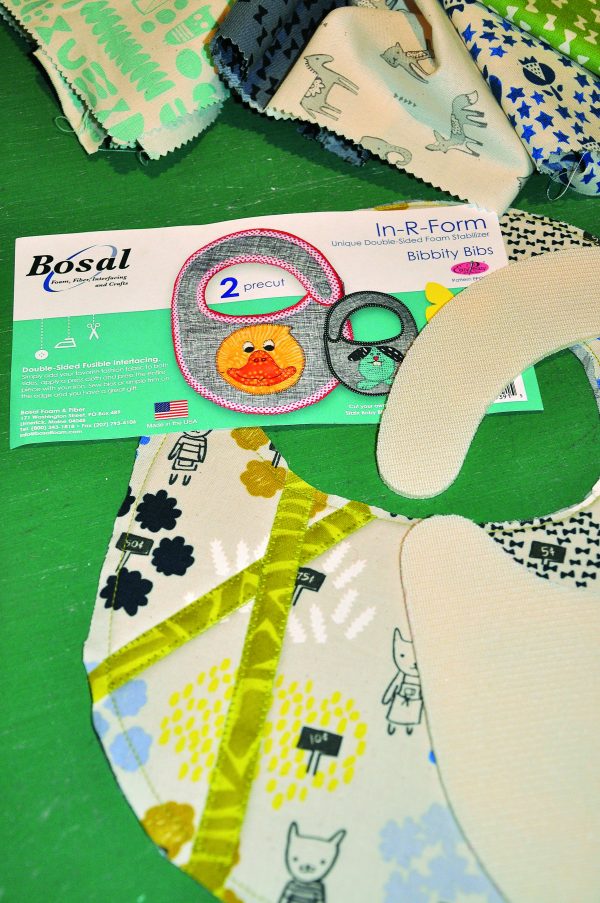
In-R-Form is also a polyester foam inner-core stabiliser, but it has a tricot, or knitted cover. It comes in sew-in, single or double-sided fusible options. It can be used in the same way as Craf-tex, but it is a spongier, more pliable product. It is suitable for the same things as Craf-tex, but also handbags and other projects that need the body, but not the stiffness of Craf-tex.
Add a modern spin on the traditional dresden plate block!
While in America on the Travelrite tour to Houston last year, I kept seeing these 3D table centres in the shops. It turns out they were made by Kristine Poor of Poorhouse Quilts. She has written patterns for specific In-R-Form precut shapes. The 3D effect of the folded pieces was eye-catching. The softer In-R-Form is not as bulky in the double-layered, folded sections. The newest shape in the collection is the bib. A narrow, flexible binding is best used on the curves of this shape — anything too wide will just pleat on the inner curves.
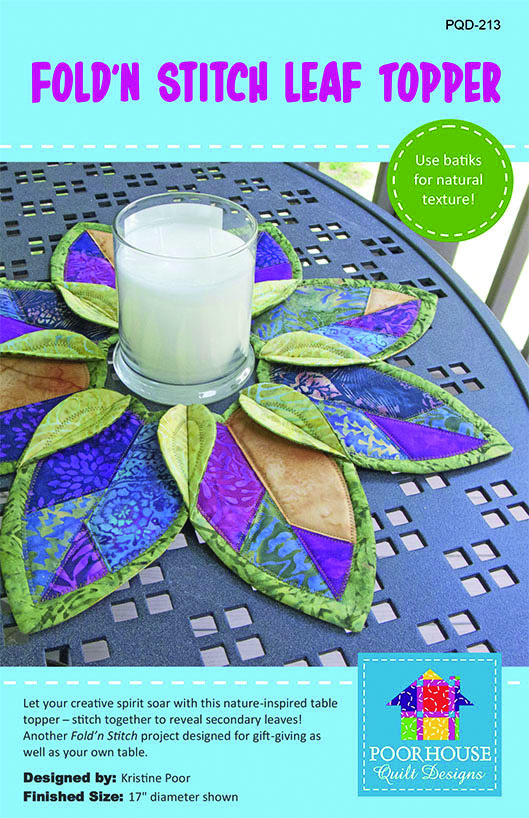
Check out what shapes your local patchwork store has on the shelf. Christmas is fast approaching; a new set of coasters, placemats and maybe a bag could be an ideal gift. For wholesale enquiries, contact Dayview Textiles, which is the distributor for Bosal in Australia.

